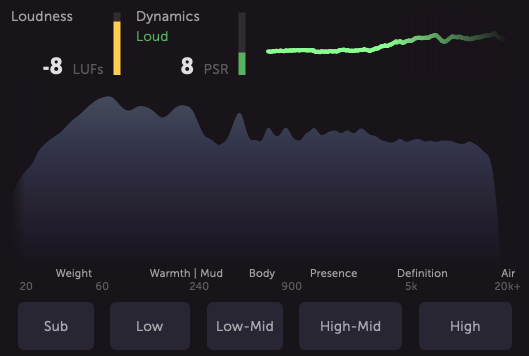Been a while since i posted anything in here but here is a track i produced. the music is mine while i sourced a vocal from splice so no doubt its in 100 other tracks.
The mastering sounds quite loud. Unfortunately, I don’t have the opportunity to check the levels. Maybe Tekalight can do this. This kick has a nice bottom.
The sounds all sound quite old-school. Like around the year 2000. A more modern sound would be more appropriate. The piano sounds a bit isolated. Maybe you should try some more delay on it.
The mixing levels seem to fit nicely. All sounds grab the right attention. Everything can be heard quite clearly.
The clap could have some more highs/air. Try an equalizer.
Where do you got the vocals from? Is it a sample pack or a remix package? Thank you.
Thanks for the feedback. Was a basic master by myself which wouldnt be something i would be overly annoyed about. Agree on the piano feedback. I searched for a female vocal in A Minor in splice and the couple of verses i used came up.
It’s a nice track, well produced, good structure and the arrangement works for me.
If I have some suggestions, that would be the sound used for the bass and maybe the balance between synths and bass.
When listening only to parts playing the bass + beat, it sounds more like a Techno track to me whereas the synths and other musical elements + vocals are more like Trance. That said it works quite well alltogether, but using a different bass sound and taming a tiny bit synths levels might be something.
But yeah, all in all, nice track ![]()
@niklasp the levels are actually OK.
The track never exceeds -8 LUFS actually, so it’s competitive with a Club Ready track.

The thing with loudness is about Perceived Loudness ( measured in LUFs ) VS what your DAW or other regular meters can read in dBFS.
So what’s the difference ?
In a nutshell : LUFS “Loudness Unit Full Scale” measures loudness in a way that’s close to how our ear-brain system interprets loudness, hence the terms “Perceived Loudness”.
Practically, it reads loudness over a period of time and it is based on the Tonal Balance of a song.
LUFS is also relative to Full Scale, so if you turn up a sound or a mix level by 3 dBFS, it’s LUFS reading wil also increase by 3 dBFS. That said, if you apply EQ, compression…ect to this sound or mix even without changing the levels, the LUFS value may also change.
So that’s the tricky part of getting the right levels but it is very handy to have tools that let you measure Perceived Loudness and measuring LUFS or LKFS ( another similar unit that’s used ).
There’s plenty of plugins out there like Izotope “Insight” or Waves “WLM Plus Loudness Meter” for example that can help measuring loudness within your DAW.
For measuring audio sources outside the DAW, I’m using Sonnox “Listen Hub” ![]()
There’s an interesting course here on Sonic Academy covering Loudness & Metering :